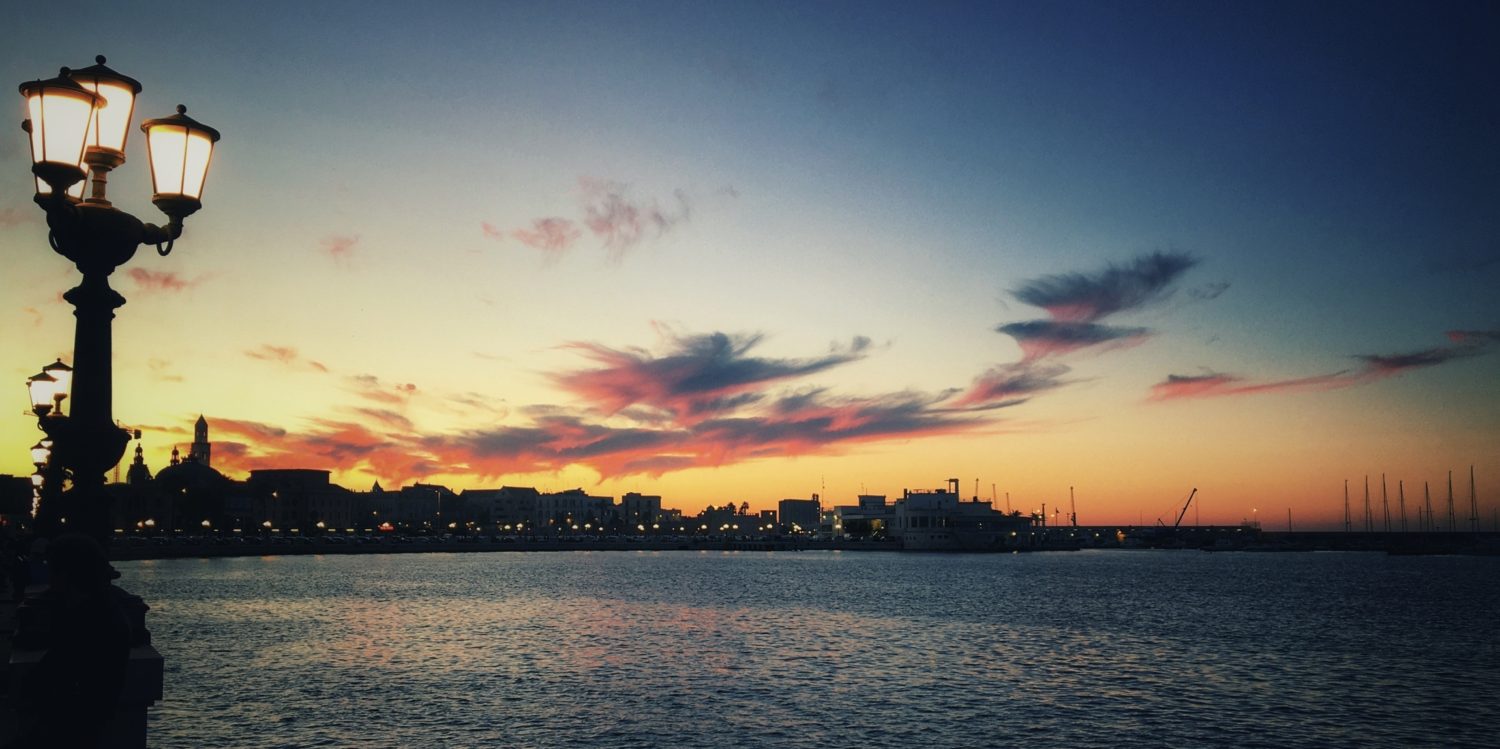One of the joys of living in Italy – even during the periods of lockdown – has been discovering local ingredients that are specific to particular regions. Edible weeds such as cicoria, cima di rapa and puntarelle in Puglia and the Salento; ‘nduja, soppressata and Tropea onions in Calabria and the crispy red peperoni cruschi of the Basilicata region, to name just a few.
A few weeks ago, I popped my head into my local casa vinicola, Vecchio Feudo on Corso Sidney Sonnino in Bari to pick up some essentials (well, olives, taralli and white wine), when a product I hadn’t seen before caught my eye as I was paying at the counter. A small glass jar in the chiller filled with a white paste was labelled ‘Ricotta forte’ (‘strong ricotta’). My interest was piqued and at €2.50 it was cheap enough to take a punt on.
A typical jar of Pugliese ricotta forte and Vecchio Feudo on Corso Sidney Sonnino in Madonnella, Bari.
I took the jar back to my flat, unscrewed the lid and a smell unlike anything else I can remember immediately hit me. It was pungent to say the least and made gorgonzola seem like Dairylea in comparison. I tentatively scraped a tiny amount onto a cracker and the sheer strength and bitterness of this spreadable cheese took the roof off my mouth. What on earth had I bought?
After some research, I found out that ricotta forte is a Pugliese speciality which is also popular in the neighbouring region of Basilicata. Its origins date back nearly one thousand years to when local shepherds would create their own unique version of the soft cheese ricotta (used in a variety of Italian sweet and savoury dishes) by placing it into wooden, glass or ceramic containers, adding salt and then storing in a dark, damp place to encourage the growth of mould. Traditionally covered with fig leaves, the cheese would be opened and stirred every week but overall, the fermentation process would take around three months. The fungus that grew gave the cheese its distinctive spicy flavour and one of the reasons the shepherds preferred this potent variety of ricotta was the fact it would keep for so long (it is said that ricotta forte never really ‘goes off’).



Ricotta forte being produced in the traditional way and served on crostini with anchovies.
The cheese soon became a local speciality and Pugliese families would often make it at home, placing the jars under the kitchen sink or in cool cantine (cellars) to ferment. It is often eaten served on crackers or crostini with anchovies or tomatoes or with sweeter ingredients such as grapes or drizzled honey. Even though I’m a big fan of strong blue cheeses, spreading ricotta forte on crostini is not for the faint-hearted. I actually found that stirring a teaspoon (yes, a teaspoon is all you need) into a pasta dish or a tomato sauce works better and adds a spiciness and piquant flavour. I also used a little in a mousse and served this with roasted fennel – the recipe courtesy of A Taste For Travel can be found here.

A Taste for Travel’s recipe for Fennel au gratin with ricotta forte mousse.
Ricotta forte has been recognised by the Ministry of Agricultural, Food and Forestry Policies as a typical food of Puglia and Basilicata and has been awarded PAT (prodotto agroalimentare tradizionale) status. Incredibly, the Campania region alone has 515 of these. The Slow Food organisation has also sung the cheese’s praises and in particular its time-honoured production method and long shelf life. In line with the current craze for fermented food such as kimchi and sauerkraut, ricotta forte is also said to have numerous health properties including aiding digestion, boosting gut bacteria and even killing off worms. Good to know.
One jar of ricotta forte is likely to last you the best part of a year (you could even consider it an investment, of sorts) and it really does have a taste unlike any other cheese. You could do worse than picking up a jar of the stuff when you next visit Italy or a well-stocked Italian deli in the UK. You never know, it might even come in handy if you are planning on organising a stag do or a sports team initiation ritual in the near future too.
You can find a video showing the traditional production process of ricotta forte courtesy of Maria Rosa Pinto below:
There is also an English-speaking ricotta forte taste test here.




Great blog, killing off intestinal worms does it for me!
Haha, great – glad to hear it! 😀